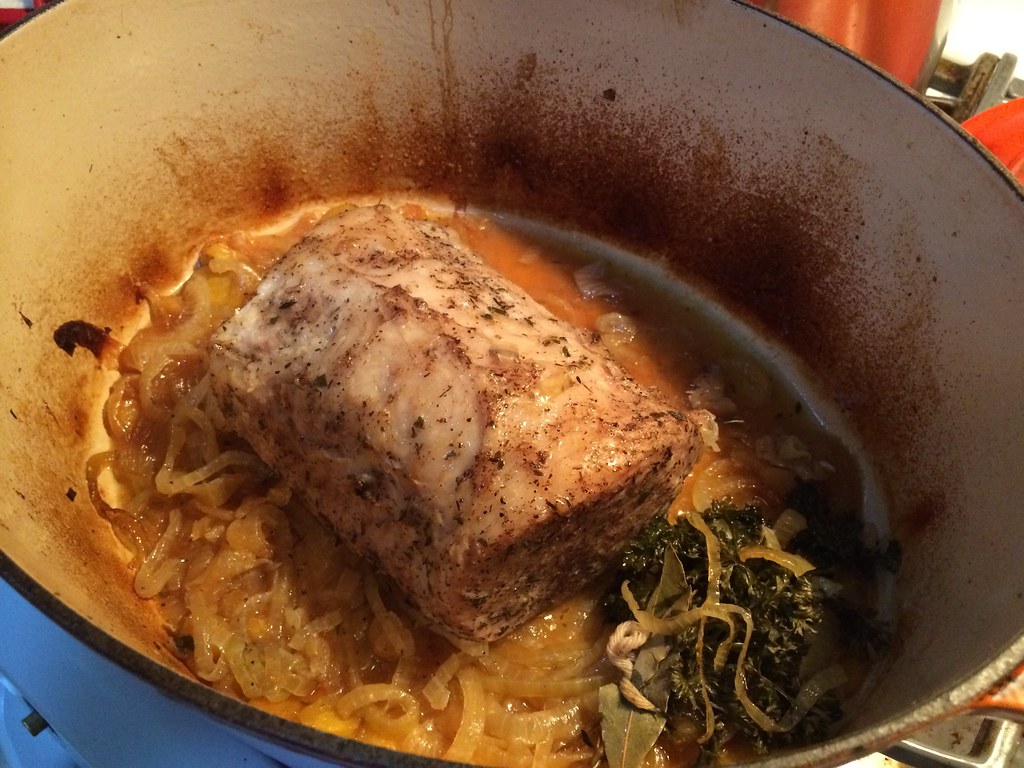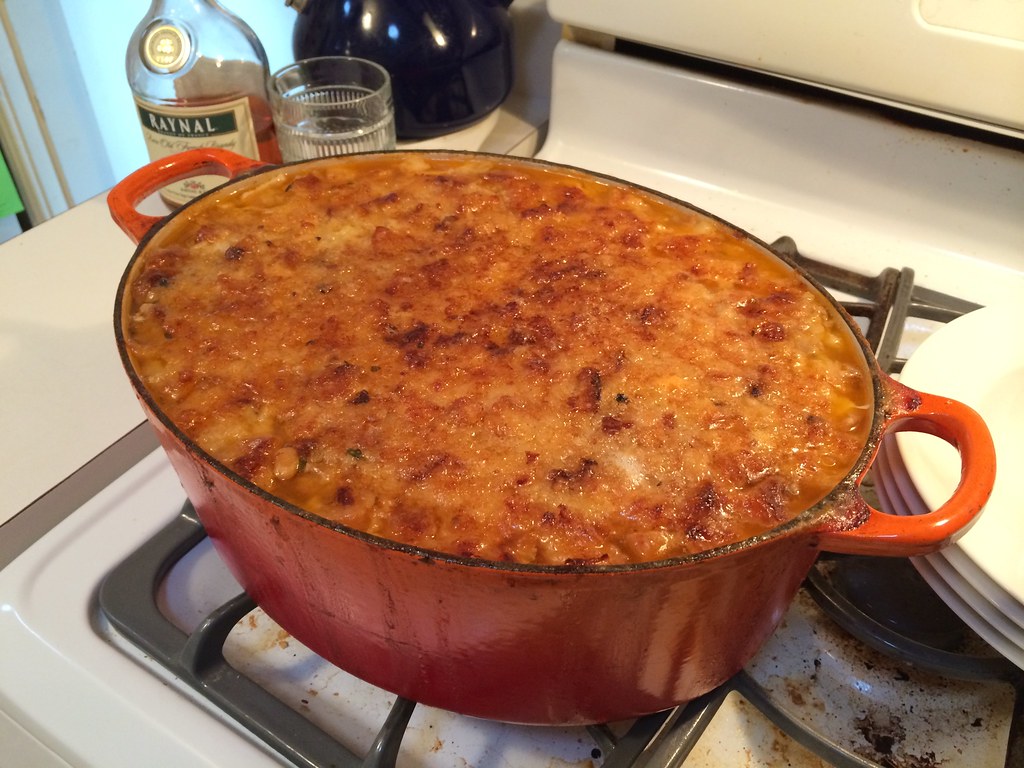Cassoulet
Figuring I wouldn’t have a better chance for months, if not years, I recently made cassoulet for a family dinner.
Fundamentally, it’s a mixture of beans and meat. The meat varies depending on which particular sub-variation you’re making, but typically includes some combination of pork, lamb or mutton, goose, and duck. It’s sometimes described as a rustic dish, but this isn’t the kind of thing you’d’ve seen every day in a peasant’s hut: There’s no way they could have had enough meat to make this more than once or twice a year.
As presented in Mastering the Art of French Cooking, it’s an intimidating dish. There’s some merit to that. If nothing else, it takes a long time; I spent about 2½ days in the kitchen working on it. The recipe actually recommends that, but more as a suggestion than a requirement, noting “[y]ou can prepare it in a day”. Well, maybe — but only if you have a near-professional-grade kitchen, complete with a huge oven into which you could fit your two or three Dutch ovens. Oh, and you’d have to start at some ungodly hour of the morning.
It’s also intimidating because it’s not presented in a way that modern American cooks are used to reading. But if you break it down, it’s not all that hard. Here’s what you do for the “basic” recipe (“cassoulet de porc et de mouton”):
- Roast a pork loin.
- Cook a huge pot of beans, along with some more bits of pork.
- Make a lamb stew.
- Pull the lamb meat out; re-cook the beans in the stew liquid.
- Make sausage.
- Layer the beans and meats together and cook it one final time.
You can probably do all those things, right? None of these sub-recipes is particularly difficult by itself. The hardest part was probably acquiring the various meats; for example, our (quite good) grocery store didn’t seem to have any pork rind (though I eventually found some). I’d recommend going to a good butcher a week or two in advance and letting them know what you’re planning, and figuring out how best to get all the meats to you at about the right time.
I cooked the loin and beans two days before dinner; I cooked the stew, re-cooked the beans, made the sausage patties, and assembled the whole thing the day before; and then pretty much all I had to do on the day of dinner was to carefully put it in the oven.1
I don’t want to make it sound trivial: Those were two days of hard work in the kitchen. My hands got very dry from all the dishwashing; I was on my feet for most of both days. There were a couple of times I was confused — again, I didn’t really know how to work with the pork rind, and kind of fumbled my way through it until I finally realized what was going on.2
And in the end, it was so good.
This is not a dish I need to make again any time soon, like in the next year or two. None of it was hard, but it was exhausting, and I think I started missing my family towards the end of the second day.
There were nine of us (five adults and four kids, two of the latter not having any, though my brother more than made up for them), and we ate barely half the dish. The Dutch oven was full literally to the rim, so that was 6¾ quarts of food.
But sure, I’ll make it again eventually. Next time, I’ll experiment with different meats, as suggested at the end of the recipe. (It’s such an involved dish that it’d be a shame to do it exactly the same way a second time — a wasted opportunity.) And maybe we’ll invite more guests — the nine of us, only one a reliably heavy eater, just wasn’t enough.3
Until then, I’ll be happy to have some of the cassoulet you make.
-
I did actually render some lard a couple days earlier. One part of the recipe involves making a substitute for saucisse de Toulouse, Toulouse sausage, involving 1 pound of ground pork and ⅓ pound of pork fat. The store only sold pork fat in 1 pound pieces. I suppose I could have asked the butcher to trim it, but instead I decided to render the remaining ⅔ pounds, which gave me about a cup of lard.4 ↩︎
-
As I purchased it, the rind was still attached to a significant thickness of fat. I tried working with the whole piece, which didn’t really match what I was reading in the recipe. It turned out that I just needed to separate the rind from the fat, and then I was on my way. ↩︎
-
The recipe says it’s “[f]or 10 to 12 people”; maybe it would have worked with 12 adults and no kids? ↩︎
-
And a bunch of cracklings. Meghan and I learned that we can happily live out our lives without having any more of that. ↩︎



